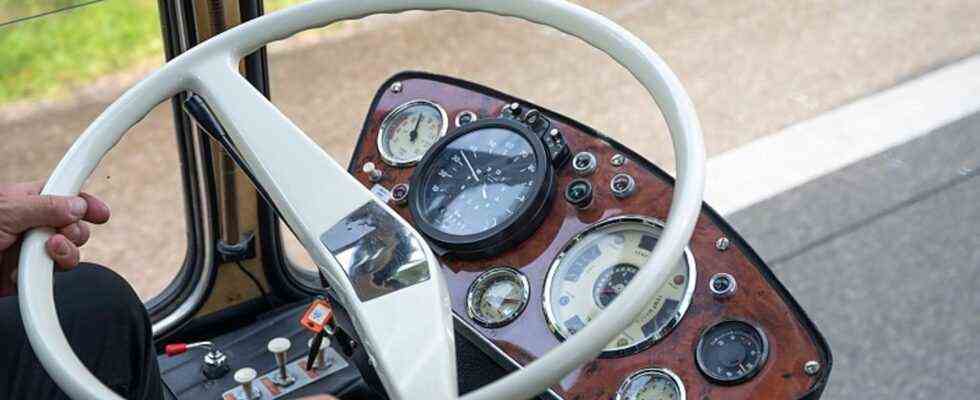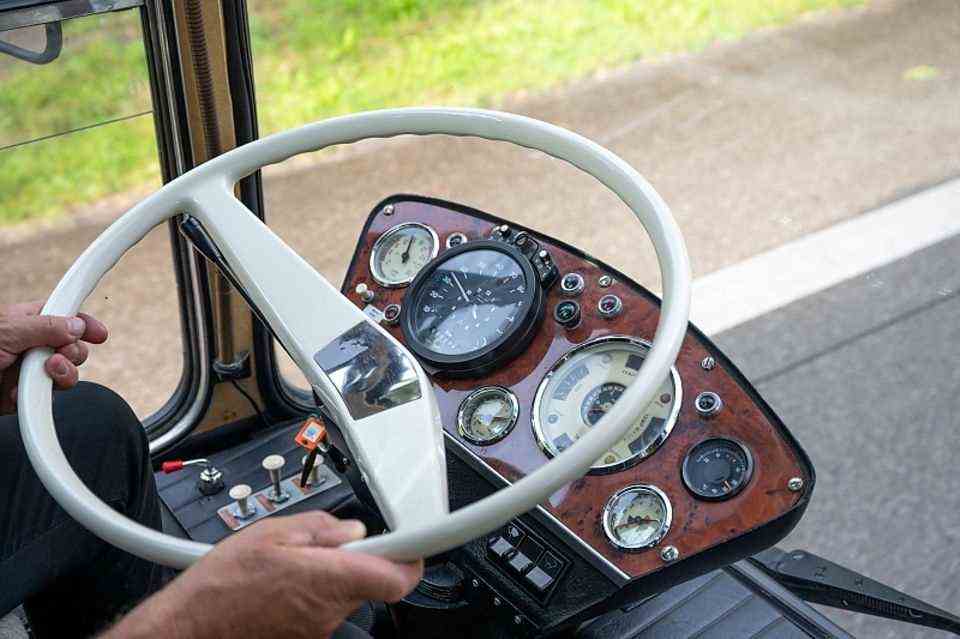Neoplan Cityliner N116 from 1971
Rolling glass palace
You have to get used to the thin steering wheel
© press-inform – the press office
In automobiles, there are some vehicles that revolutionized the industry. Ford’s Model T was one, the “goddess” Citroën DS another or, of course, the VW Beetle. In buses, the Neoplan Cityliner changed the way people were transported on asphalt roads 50 years ago. We drove it.
At the beginning of the 1970s, the world was in a state of upheaval. It was an era of contrasts. The youth revolted and demanded love instead of war and denounced the mustache under the robes. On the other hand, people were fascinated by the future and space. After all, on July 20, a person set foot on the moon for the first time. Science fiction was hip.
The Swiss-born Hans Robert “Bob” Lee took up this zeitgeist together with his sponsor Albrecht Auwärter, former company owner and head of the bus manufacturer Neoplan, and designed a new bus. The vehicle should be completely different, i.e. not a purely purpose-built passenger transporter, but more luxurious and open. New horizons should be opened up. Not only inside, but also outside. The inspiration for the new coach came from the double-deckers that made their rounds in London and Berlin. The view should go beyond the walls of the past.
At the 20th International Bus Week in 1971 in Monaco (where else?), The Stuttgart bus manufacturer Neooplan presented the Cityliner N116. The new coach broke with all previous conventions. The passengers sat on the second floor, in a glass palace and could enjoy the view from the elevated position. Only a few struts blocked the view and no annoying wheel arches narrowed the 45 seats, each of which had a nozzle ventilation system. The driver sat in the underfloor, plus there was a large trunk and a toilet. The comfort equipment also included a microphone, a radio, a cool box, two Visá-Vis tables, curtains and an electric air conditioning system. At the beginning of the 1970s, that was pure luxury. A new world of travel opened up over a length of 12 meters and a width of 2.5 meters.
The response from the international visitors present was overwhelming. Some pushed their lower lip forwards in appreciation, others were looking forward to the first trip in the revolutionary vehicle, the Neoplan competitors cursed themselves and mumbled: “Damn it, why didn’t we get the idea.” Too late. The design concept of the first Neoplan Cityliner is still valid today, 50 years later: The split windscreen and the glass surfaces that extend into the roof still show that a Neoplan Cityliner is on the move.
The propulsion of the classic Neoplan Cityliner N116 came from a wonderful twelve-liter six-cylinder Henschel 6R 1315 diesel with 176 kW / 240 PS and a beefy torque that is adjusted with a six-speed gearbox. We sit at the wheel of the original and quickly wonder how the driver got along with the thin, monstrous steering wheel rim when it was warm and the palms of the hands were damp. All the same. The classic can be moved easily as soon as you have made friends with the sensitive gear shift. Due to the seating position behind the large window, you have a great overview and after a certain period of getting used to it, you can steer the vehicle, which weighs tons, around corners. One highlight, however, is the diesel. Nothing beats displacement except even more displacement and 11,943 cm³ are hard to beat. So you can cruise so wonderfully with the Cityliner from the year of construction 1971, even in the supposed rev range, that it is a real pleasure.


